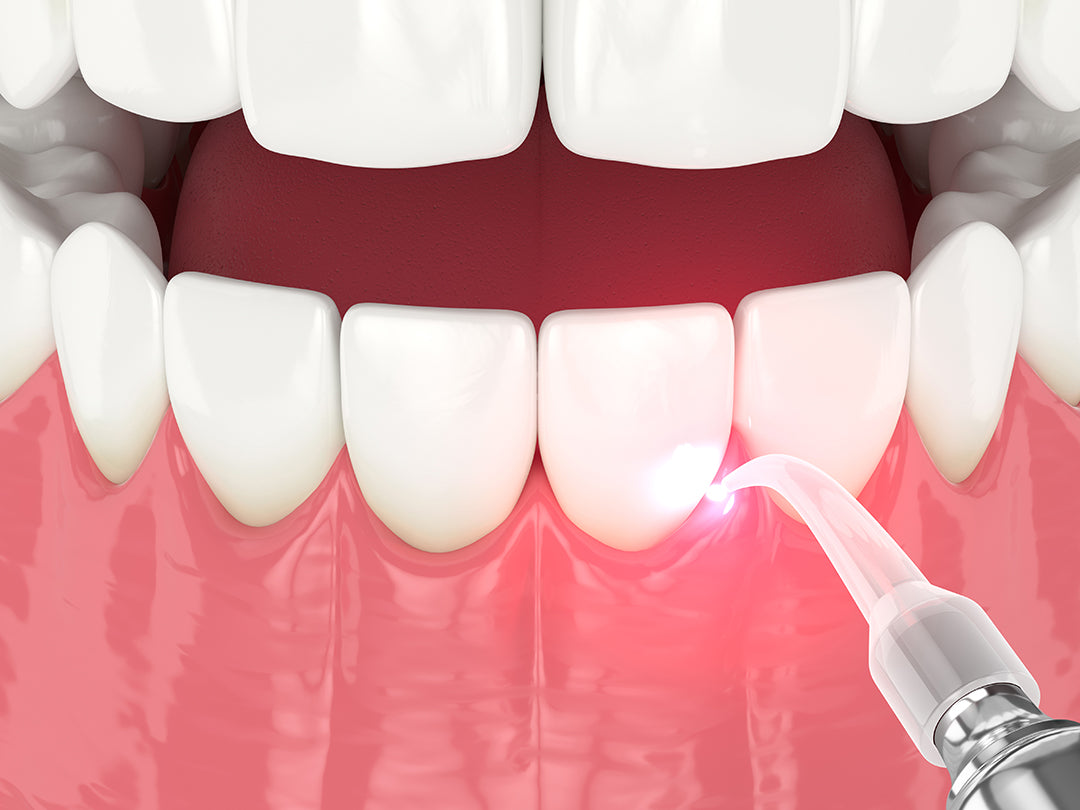No products in the cart.

Gingivectomy, a procedure aimed at removing excess gum tissue, plays a crucial role in improving oral health and aesthetics. With the advent of soft tissue diode lasers, dental professionals now have a modern and effective alternative to traditional gingivectomy methods. In this blog post, we will explore the patient benefits of using soft tissue diode lasers for gingivectomy and how these advantages translate into benefits for dental practices.
- Minimally Invasive Procedure: Soft tissue diode lasers offer a minimally invasive approach to gingivectomy. Compared to traditional methods involving scalpels and sutures, lasers provide precise and controlled tissue removal without the need for incisions or stitches. Patients benefit from reduced trauma, minimal bleeding, and a more comfortable experience during the procedure.
- Improved Healing and Tissue Regeneration: The use of soft tissue diode lasers during gingivectomy promotes faster healing and tissue regeneration. The laser energy stimulates biostimulation and coagulation, resulting in accelerated wound healing and reduced postoperative discomfort. Research published in the Journal of Oral Laser Applications emphasizes the positive impact of soft tissue diode lasers on wound healing and tissue regeneration (Romanos et al., 2019). Patients experience less pain and swelling, allowing for quicker recovery and improved overall oral health.
- Reduced Risk of Infection: Soft tissue diode lasers generally can offer inherent bactericidal properties, reducing the risk of infection during and after gingivectomy. The laser energy efficiently sterilizes the surgical site, minimizing the presence of harmful bacteria. This advantage was supported by Gordan Christensen's Clinicians' Report, which highlights the reduced infection risk associated with soft tissue diode lasers during oral surgical procedures (Christensen, 2018). Patients benefit from a lower chance of complications and improved oral health outcomes.
- Enhanced Precision and Esthetics: Soft tissue diode lasers enable precise and controlled tissue sculpting, resulting in improved esthetic outcomes. The laser allows for selective removal of excess gum tissue, reshaping the gumline to achieve harmonious aesthetics and better tooth proportions. Patients appreciate the natural-looking results and increased confidence in their smiles, leading to enhanced satisfaction and referrals.
Conclusion: The use of soft tissue diode lasers for gingivectomy offers significant patient benefits, including minimally invasive procedures, improved healing, reduced risk of infection, and enhanced esthetic outcomes. These patient benefits directly contribute to advantages for dental practices. By incorporating soft tissue diode lasers into their gingivectomy protocols, dental professionals can provide advanced care, increase patient satisfaction, and differentiate their practice in the competitive dental landscape.
References:
Christensen, G. J. (2018). Lasers in dentistry—2018. Clinicians' Report, 11(7), 1-4.
Romanos, G. E., Crespi, R., Barone, A., Covani, U., Oates, T. W., & Rasperini, G. (2019). Laser Assisted Soft Tissue Management and the Biological Rationale: A Retrospective Analysis of Histologic and Histomorphometric Parameters Related to Soft Tissue Healing. Journal of Oral Laser Applications, 19(3), 159-166.
Leave a comment



